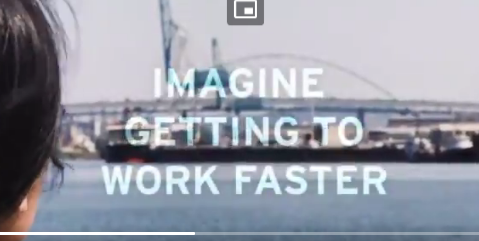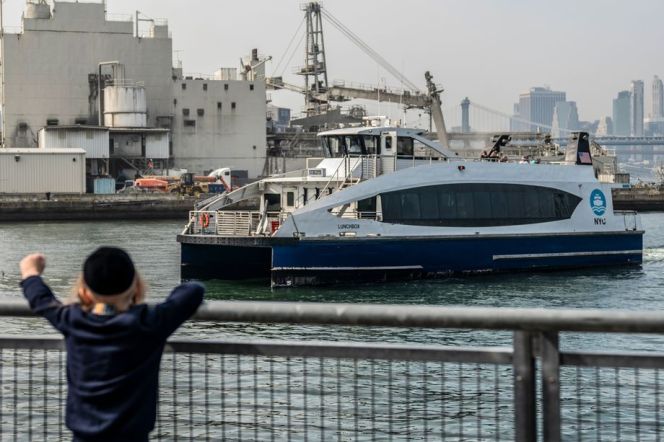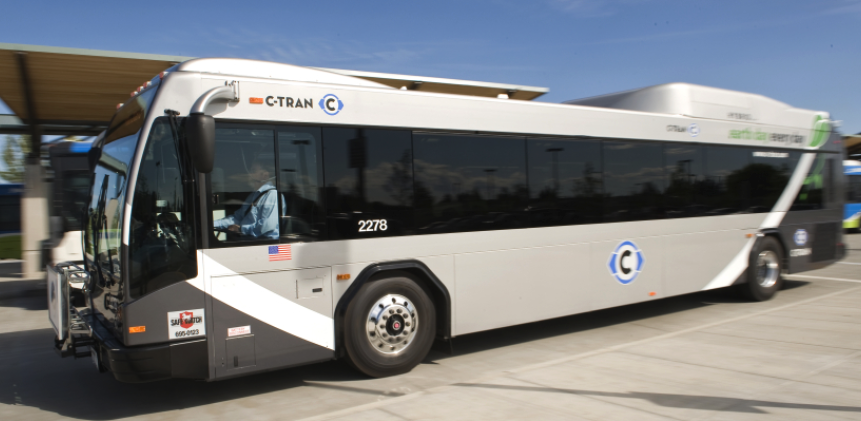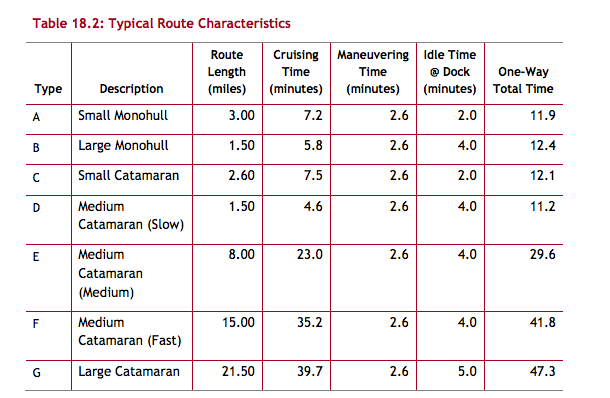A proposed Portland area ferry makes no economic or transportation sense.
Why the Frog Ferry is a slow boat to nowhere
A ferry between Vancouver and Portland would take 20 minutes longer than existing bus service
From flying cars to underground tunnels to ferry boats, there’s always an appetite for a seemingly clever technical fix for urban transportation problems. But in the end, transportation is about performance, cost and geometry, and nearly all of these inventive ideas fail dramatically one one, two or all three of these criteria. When it comes to making urban transportation better, what is needed, as Jarrett Walker told a recent YIMBYtown audience, is less charisma and more scale.
The latest of these transport fantasies is a Portland proposal for a “Frog Ferry”—the cute name is a dead giveaway that this idea is long on hype and short on substance. The pitch for the ferry goes like this:
Wouldn’t it be cool, if instead of taking a bus or a car, you could take a boat from Vancouver Washington, or Lake Oswego Oregon, to downtown Portland. Wouldn’t it be great if it was faster than driving or a taking a bus?
With a keen eye to PR, the proponents of the Frog Ferry have produced a glossy video implying the ferry would be faster than car or transit service.

You can imagine it, for sure. But it is imaginary. It’s not possible for a regular ferry service to travel faster between Vancouver and Portland than a car, or even today’s bus service. In the real world, boats are slower than both cars and buses. Water transportation, especially given the circuitous water route between Vancouver and Portland, the slow speeds of even “fast” ferries, the need to minimize damaging wakes at higher speeds, and the relative remoteness of docks from actual destinations, means that ferries in Portland are an unwise, uneconomic folly.
The devilish details
What exactly, is the Frog Ferry? The Frog Ferry is a proposal to establish water ferry service on the Columbia and Willamette Rivers, connecting Vancouver, Washington, and downtown Portland and Lake Oswego and or Oregon City. The Ferry plan is to operate 6 boats (four carrying up to 100 passengers and two carrying sixty). With the help of the Oregon Department of Transportation and the City of Portland, ferry proponents have gotten hundreds of thousands in public funds to undertake a series of feasibility studies. So far, they’ve mostly figured out that the project would need at least $40 million to pay for boats and docks, as well as continuing subsidies to support operating costs.
In recent days, its seemed like the Frog Ferry proposal sinking fast. Tri-Met, the region’s transit agency, charged with being fiscal agent for a grant from the Oregon Departmetn of Transportation, disputed and refused to pay invoices from the Frog Ferry organization. The Portland City Council declined to bail out the organization. The ferry advocates are trying to revive the project, but should anyone care? Let’s take a close look at what’s proposed and see if it makes any sense.
Frog Ferry: The slow boat to nowhere
As the marketing materials make clear, a faster trip is a big part of the promise here. But would a ferry, particularly between Vancouver and Portland, be very fast? Downtown Portland and downtown Vancouver, Washington are only about seven miles apart as the crow flies, but not as the salmon swims. To get from Vancouver to Portland by water, you have to go west on the Columbia River five miles to its confluence with the Willamette, and then make a U-turn and go south-east on the Willamette River almost ten more miles to get to downtown Portland. The trip by water is twice as long as the straight line distance, making for a lot of out-of-direction travel.

There isn’t lots of traffic on the river, but there are still real limits to how fast ferries can go. As a practical matter they’re generally limited to top speeds of 20 to 25 knots, and often much slower. A big problem with fast ferries is that they create a big wake, which can be disruptive to other water users, and damaging to sensitive riverbanks. Limiting damaging wakes is a key reason that ferries travel as slowly as they do. For example, even in Vancouver, British Columbia where ferries cross the wide Burrard Inlet Seabus, travels at about 11-12 knots. These catamarans are capable of higher speeds, but are forced to travel at lower speeds to avoid the excess wake. The Frog Ferry’s proponents assume their vessel will be able to cruise at 24 knots, but they’ve yet to address the damage that this high speed wake will do along the confines of the Columbia and Willamette Rivers. In addition, the ferries will have to make a 130 degree turn around Kelly Point, which would be an amusement park ride experience at 24 knots.
Today’s buses are already faster
The ferry system is actually likely to be much slower than implied by the advocate’s estimates. The 15 mile-river trip from Vancouver with a stop in St. Johns, would take around 45 minutes according to their own very optimistic estimates, as much as 10 minutes longer than current rush hour bus service.
That’s not surprising: by road, the distance traveled is a more than a third shorter (9.3 miles) and an off-peak car trip takes about 15 minutes according to Google.
The Frog Ferry marketing claims that the ferry would be faster, but it wouldn’t. It’s not only not faster than driving, it’s actually slower than today’s transit. How long does it take to get by bus from Vancouver or Lake Oswego to Salmon Street Springs, the proposed downtown Portland terminus? Let me Google that for you.
For bus service from Vancouver to Portland its, 34 to 38 minutes:
And the ferry is just the line-haul portion of the trip: Since almost no one lives or works right at these stops, they’ll have to walk (or drive or take a bus) onward from the place the ferry docks to their destination. The Vancouver, St. Johns and Lake Oswego sites are remote from housing, and aren’t currently served by transit. Downtown Portland’s Salmon Street Springs is a four minute walk from the nearest light rail stop, and about seven minutes to Portland’s transit mall. And these are for travel to Salmon Street Springs, not to someone’s work or shopping destination. It’s a half mile, 10 minute walk up or down a steep hillside from downtown St. Johns to the river side in Cathedral Park.The C-Tran and Tri-Met buses that ply these routes actually stop at multiple locations, like downtown Portland’s transit mall, which are much closer to offices, stores and other destinations. So if anything, these estimates understate the travel time advantage of today’s buses.
It’s almost certain that Frog Ferry advocates have overestimated how fast their ferry will be. They told Metro to assume that the ferry had an average speed of 24 knots (27.6 miles per hour). While high speed ferries can cruise that fast (or few knots faster), during much of their travel cycle they’re either going much slower (maneuvering into and away from docks, accelerating or slowing, or are restricted by traffic or low wake zones). As a result average speeds are far less than cruising speeds. Moreover, the 24 knot average speed is higher than the 22 knot “cruising speed” assumed in the Frog Ferry’s own operational feasibility plan.
Those with real world experience report much slower service speeds. New York—which has broad experience with ferries—estimates much different speeds that the Frog Ferry’s advocates. Its Citywide Ferry Study concluded that an eight-mile leg with a medium-sized catamaran ferry would take a total of close to half an hour, with time for dwell, maneuvering and cruising—the Frog Ferry’s estimates don’t seem to allow for maneuvering to and from the dock. Seattle’s proposed 10.5 mile Kenmore Ferry Route, operated with a 28-knot cruising speed ferry similarly requires close to 40 minutes one-way when allowance is made for loading, unloading and maneuvering.
Between Portland and Vancouver, the Frog Ferry would travel more than 15 miles in two nearly equal segments stopping at St. Johns. That would put its travel time close to two-legs eight mile legs by the medium catamaran (Type E), in the table above, or one full hour.
The real world performance of ferries shows that the proposed Frog Ferry simply would not be time competitive with existing transit service in Portland. A ferry ride between Vancouver and Portland is going to take nearly an hour—twenty minutes or more longer than a current-day bus ride. And the ferry will pick up and deposit its customers and the river’s edge, not their final destinations, unlike transit buses which actually traverse widely patronized destinations. As a practical matter, a boat that takes considerable longer than a bus moving in mixed traffic just isn’t going to attract very many riders.
The romance of water travel and the apparent illusion of escaping traffic has certainly charmed some into pursuing the Frog Ferry idea, but as a practical form of transportation it is far less efficient and direct that the far more humble and prosaic transit bus, which despite its boring character is still faster than the fastest feasible water transport.
The fact that ferry service would dramatically under-perform existing bus service ought to be enough to reject the Frog Ferry idea out of hand, but that’s just the most obvious problem with ferry service. It also turns out that ferries are enormously expensive, highly polluting, and tend to principally serve higher income commuters, points we’ll explore in future commentaries. If a community is interested in efficient, equitable and sustainable mass transportation, the Frog Ferry shouldn’t be part of its plans.





